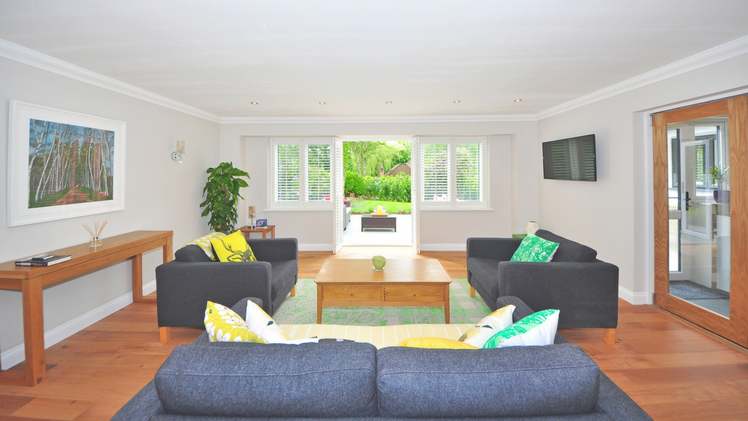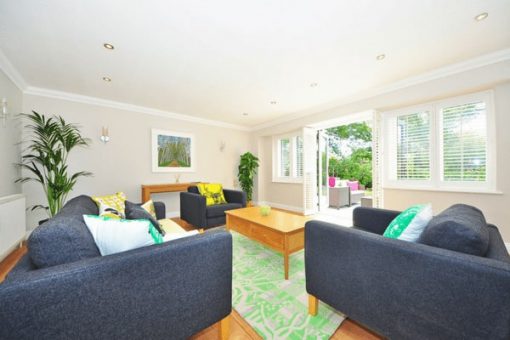Staging your house for sale
When preparing your home for sale, you’ll want to impress buyers with top-notch photography and a great inspection experience. Prospective buyers should be able to envisage themselves living comfortably in your property. So, hiring a professional stager with an independent view and fresh eye is a great start and could add thousands of dollars to your selling price. So, what’s involved? And how much does home staging cost?
What is home staging?
Home staging involves setting up your property to impress as many prospective buyers as possible. You can stage your home yourself or hire a professional property styling service to achieve this. Every homeowner has their unique style, but a professional home stager will consider current buyer trends and have experience de-cluttering and presenting a home to sell in today’s market. Property styling aims to remove unnecessary items that won’t appeal to all buyers, for example, pet beds, high chairs and toys, as well as obscure collectables. Then, once you’ve de-cluttered and you’re left with the bare minimum, the next step is styling to cater for the taste of as many buyers as possible.

What’s the role of a home stager in a property styling campaign?
If you’re looking for guidance, a home stager can provide a one-off property styling consultation to point you in the right direction. If you’d like to go one step further, ‘partial staging’ is a service provided where the staging professionals will offer room-by-room ideas and if you need, a selection of trending décor items. If you’ve already moved out, certain home staging companies can provide you with a complete furniture overhaul to prepare you for photography and inspections.
How much does home staging cost?
Home staging costs can vary depending on whether you’re simply after a consultation, partial staging, or if you’ve already moved out and need furniture to stage your home. Secondly, the size of your property and the number of rooms needing property styling will also play a big part. You can get a once-off property styling consultation for as little as $200.
In Melbourne or Sydney, you can expect to pay between $2,000–$3,000 to hire furniture and accessories for a 3-bedroom property for six weeks. Your local real estate agent will have connections and will be able to recommend professional home stagers to style your home. Or, rather than referring you to real estate staging companies, they may even have property styling tips and experience themselves.
DIY home staging
If you’re comfortable preparing your home for sale without a property stylist or a home staging company, it’s worth getting tips from a local real estate agent. They’ll know what buyers in your area are looking for in a property. You can work alongside a real estate agent if you’re looking for a more affordable way to stage your home without a property styling campaign. This way, you can decide on which features in your home to highlight together before photography and inspection time. Discover steps to successful DIY home staging here. You can compare real estate agents at localagentfinder.com.au.
Virtual home staging service
Nowadays, your rooms can be styled digitally, saving you thousands of dollars in property styling costs. This can be great for online listings and brochures as it increases buyer interest. However, there’s a risk that you’ll leave viewers disappointed when they come to visit your property in person.
Home Staging Tips
Home staging is a crucial aspect of preparing your property for sale, as it can significantly impact attracting potential buyers and securing a good price. Different properties require different approaches to home staging. Whether you’re selling a small inner-city unit, a suburban townhouse, or a compact home, these tips will help you make the most of your space and showcase your property in the best light possible.
Inner-city units
Home Staging Tips for Inner-City Units
Inner-city units offer a convenient and low-maintenance lifestyle, making them a popular choice for many buyers. However, with limited space, staging an inner-city unit can present some unique challenges. It’s essential to make the most of your space and showcase the best features of your unit, so it appeals to potential buyers and increases your final sale price.
Maximise Space:
In an inner-city unit, space is at a premium. To make the most of your space, use multi-functional furniture that can be easily stored when not in use. Invest in furniture with built-in storage, such as ottomans, coffee tables, and bookcases, to keep items out of sight.
Highlight Natural Light:
Inner-city units often have limited natural light, so it’s important to make the most of what you have. Keep windows clear and open, and use light colours on the walls and floors to reflect light and create a brighter and more spacious feel.
Create Zones:
In a small inner-city unit, it’s important to create a sense of separation between different areas, such as the living room, dining area, and bedroom. Use furniture and rugs to define different zones, and invest in lighting to highlight each area and create a cozy atmosphere.
Suburban townhouses
Suburban townhouses offer a balance between city living and suburban peace, making them a sought-after choice for many potential buyers. When it comes to home staging, it’s important to highlight the unique layout of your suburban townhouse and create a welcoming and homely feel.
Highlight the Layout:
Suburban townhouses often have a unique layout with defined living areas. Use furniture to highlight these areas and create a natural and spacious flow. Place furniture in a way that makes the most of the space, and consider using mirrors to create the illusion of more space.
Create a Cohesive Look:
To make the most of the limited space in a suburban townhouse, it’s important to create a cohesive look throughout the property. Choose a neutral colour scheme, use similar styles and textures in each room, and keep decorations minimal to maintain a spacious and open feel.
Create a Homely Feel:
To attract potential buyers, creating a homely feel in your suburban townhouse is important. Use soft lighting, cozy textiles, and personal touches such as family photos to make the space warm and inviting. Place potted plants in various rooms to add a touch of nature and create a serene atmosphere.
Small homes
Staging a small home can be challenging, but with the right techniques and creativity, you can make the most of your limited space and appeal to potential buyers. Small homes offer an intimate and low-maintenance lifestyle, making them an attractive option for many buyers.
Emphasise Vertical Space:
In small homes, it’s important to make the most of every inch. Consider using shelves, bookcases, and hanging baskets to take advantage of vertical space and avoid overcrowding. This will give the illusion of more floor space and help to keep the area feeling spacious.
Play with Textures:
Small homes can benefit from adding texture to create a warm and inviting feel. Consider using soft textiles, such as throw blankets or cushion covers, to add texture to your space. Additionally, you could use patterned wallpaper, textured flooring, or textured lighting fixtures to enhance the overall look of your small home.
Create Separate Zones:
Small homes often lack defined living areas, but you can create the illusion of separate zones by using furniture and decor. Use area rugs, screens, or curtains to divide a single room into separate living spaces. This will give each area its unique feel and create a feeling of spaciousness.
How to find the right home stager
There are a few things to consider to help you find the perfect home stager for a property that you’re trying to sell. Here are some of them:
Experience and qualifications
You need to consider these two things when looking for home stagers in Australia. How long have they been in the professional home staging business?
You should also see if they are familiar with your city’s market and their track record.
You should remember that some people may claim they do home staging because they have experience decorating homes. However, this is different as staging isn’t the same as decorating. Hence, whilst someone may have a lot of experience in decorating homes, that doesn’t mean they can deliver the results you want.
The main difference between those who can decorate homes and home stages is that home stages can make a home look great and appeal to a specific market. That said, there’s a better chance the property will sell fast.
Insurance
When you are looking for a home stager, you want to work with one who is insured. A professional, legitimate, experienced home stager must be fully insured.
Insurance protects in case injury or damage occurs during the staging process. When interviewing home stagers, ask for proof that they’re insured first.
Portfolio
A legitimate and reputable home stager has worked with several clients in the past, and they have proof of this in the form of a portfolio. Ask a potential home stager for their portfolio to see their style and how they work.
A portfolio will also show you if the home stager is up-to-date with the latest trends and if they have staged homes within your home’s price range.
The quality of the photos is significant as well. You don’t want to look through a portfolio filled with low-quality images. A reliable home stager invests in high-quality, professional photos to showcase their work.
Testimonials and reviews
What clients say about a home stager is important, which is why you should try to find testimonials and reviews. You can usually find them on their websites, social media platforms, and other physical sources that they can provide.
A reliable and reputable home stager will have plenty of good reviews, whilst negative feedback doesn’t necessarily mean “bad.” When you encounter bad feedback, you would want to look at how the stager responds, as this will reveal a lot about the home stager.
So, what’s next?
If you’d like to hire a professional home stager to style your property, finding a great real estate agent is the best place to start. A good agent will have professional connections with home stagers. Or, you might even find that they have enough experience themselves. You can compare real estate agents, including commission rates, marketing fees, sales history and more at localagentfinder.com.au.







